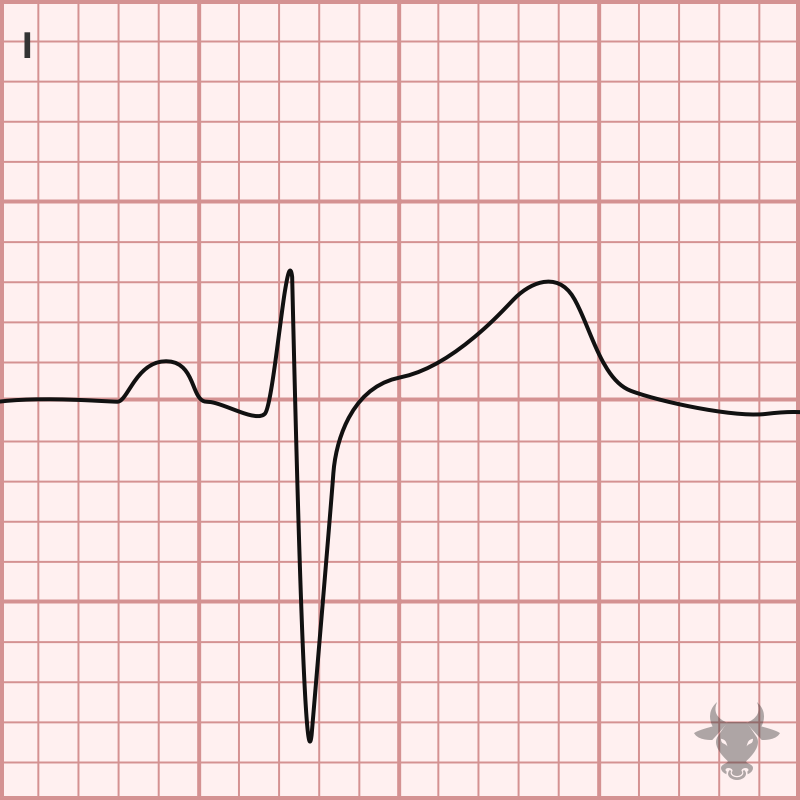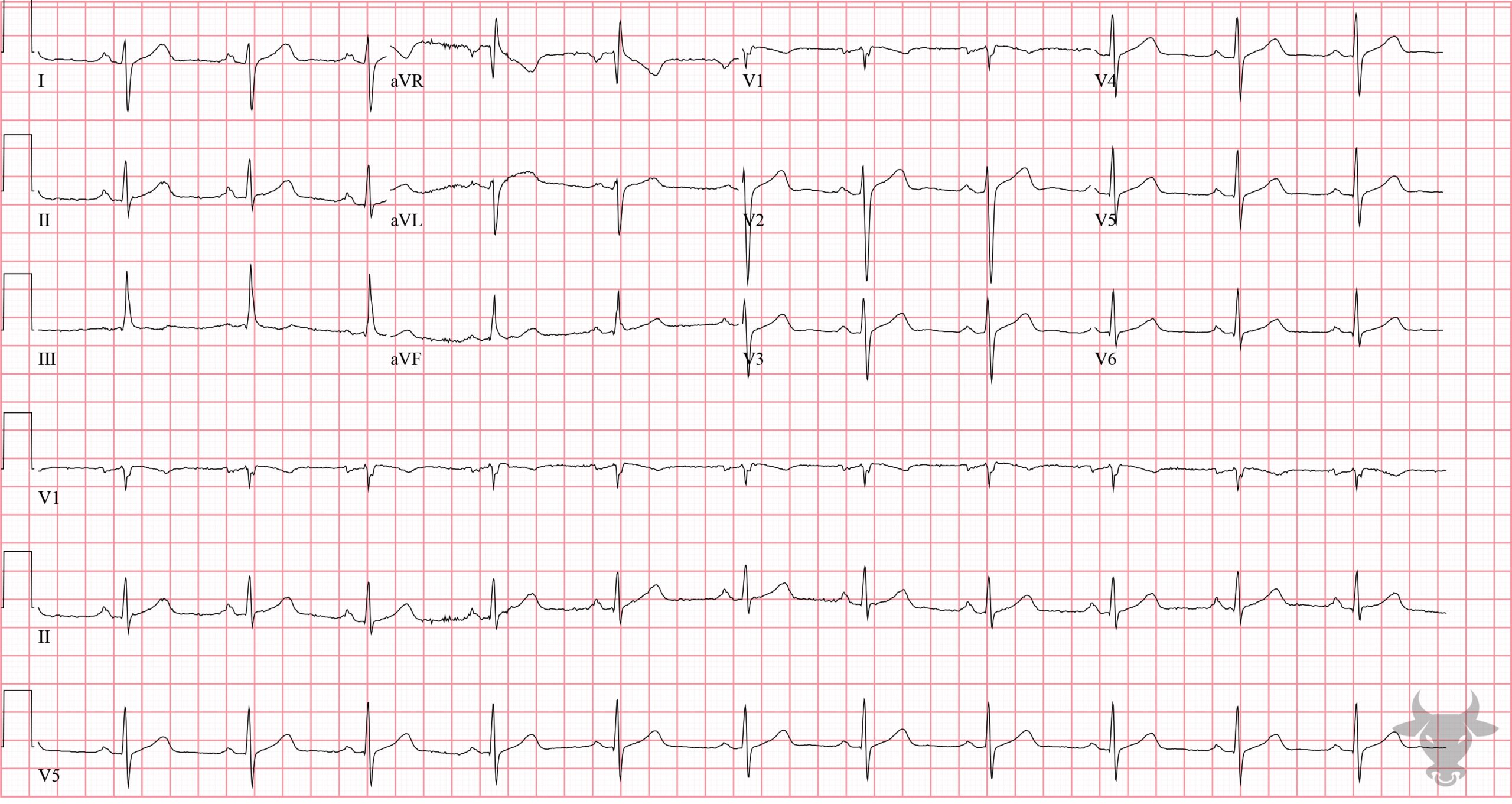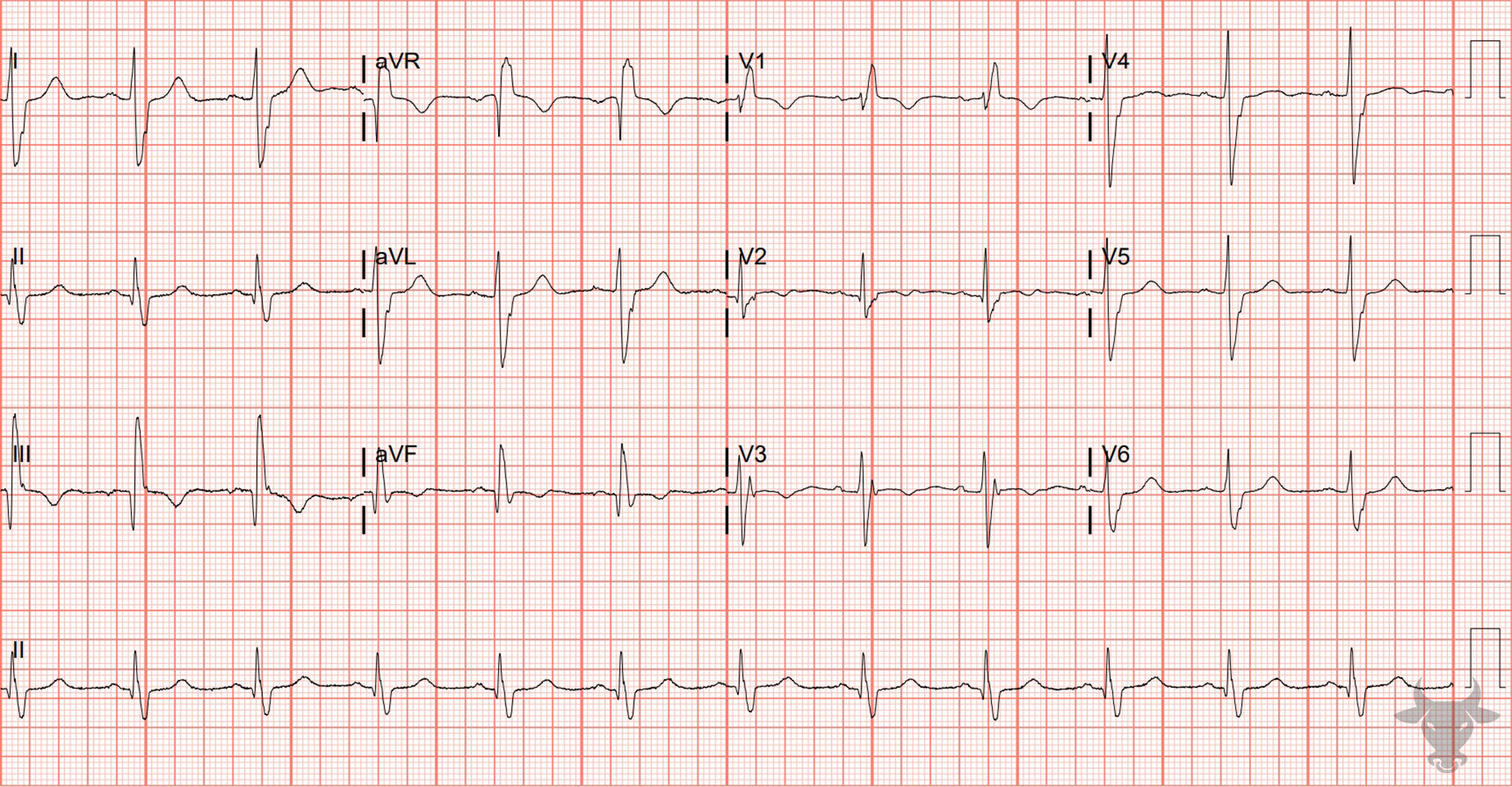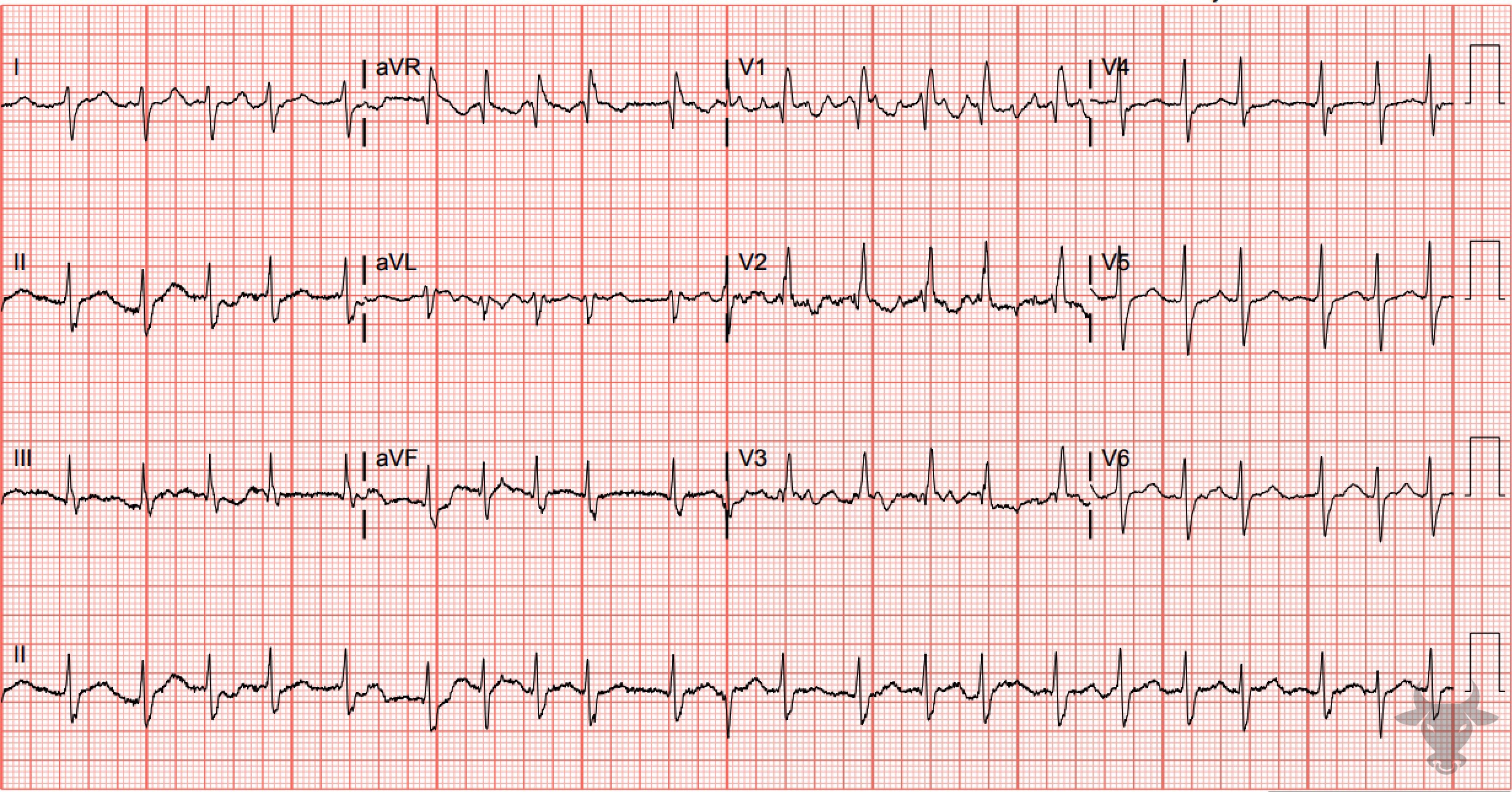The normal infranodal conduction system divides into the right and left bundles, the latter is further subdivided into anterior and posterior divisions or “fascicles.” Disruption of both fascicles produces the familiar left bundle branch block (LBBB) pattern, but each fascicle can be affected independently – resulting in either left anterior fascicular block (LAFB) or left posterior fascicular block (LPFB). When the left posterior fascicle is disrupted, current passes along the anterior fascicle and the left ventricle is depolarized in a rightward/posterior direction – producing right axis deviation, Criteria for diagnosing LPFB include:
- Right axis deviation
- Small q waves with large R waves (“qR complexes”) in II, III and aVF
- Small r waves with large S waves (“rS complexes”) in I and aVL
- Normal or slightly prolonged QRS duration (80-110 ms)
LPFBs rarely occur in isolation, owing to a robust blood supply, and, instead, nearly always coexist with a right bundle branch block (bifascicular block).
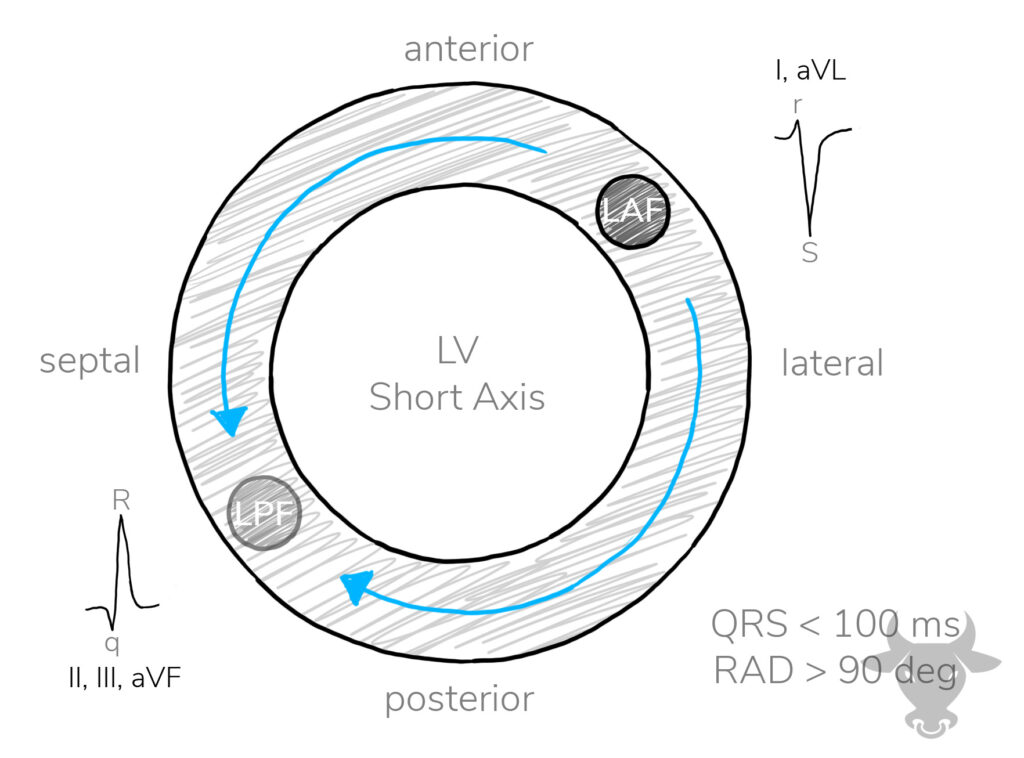
Locations of the anterior and posterior fascicles within the left ventricle. The curved blue arrows demonstrate the direction of depolarization when the left posterior fascicle fails, leading to right axis deviation. LV, left ventricle; LPF, left posterior fascicle; LAF, left anterior fascicle; RAD, right axis deviation.

